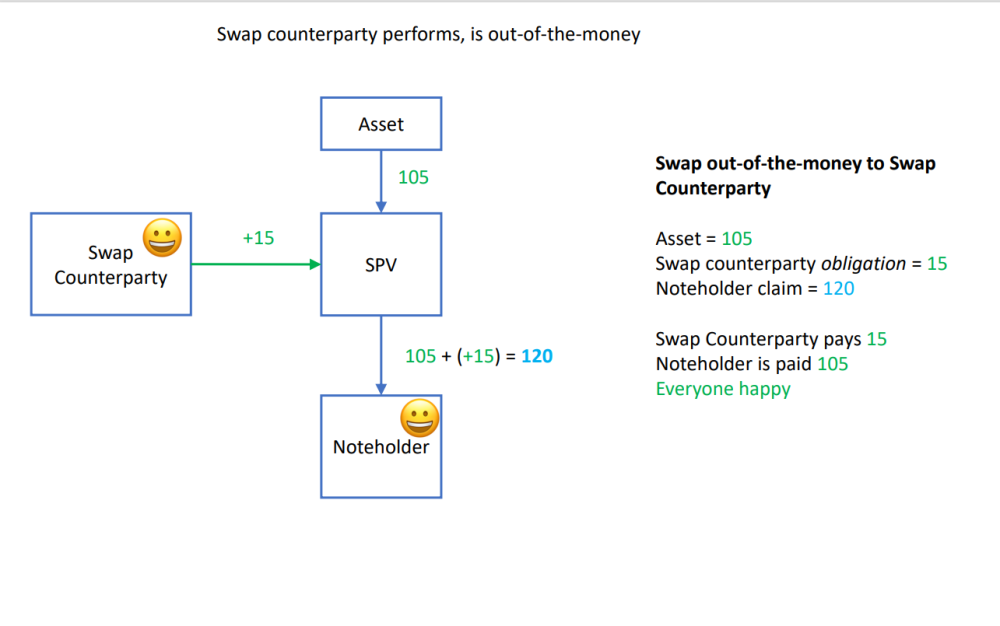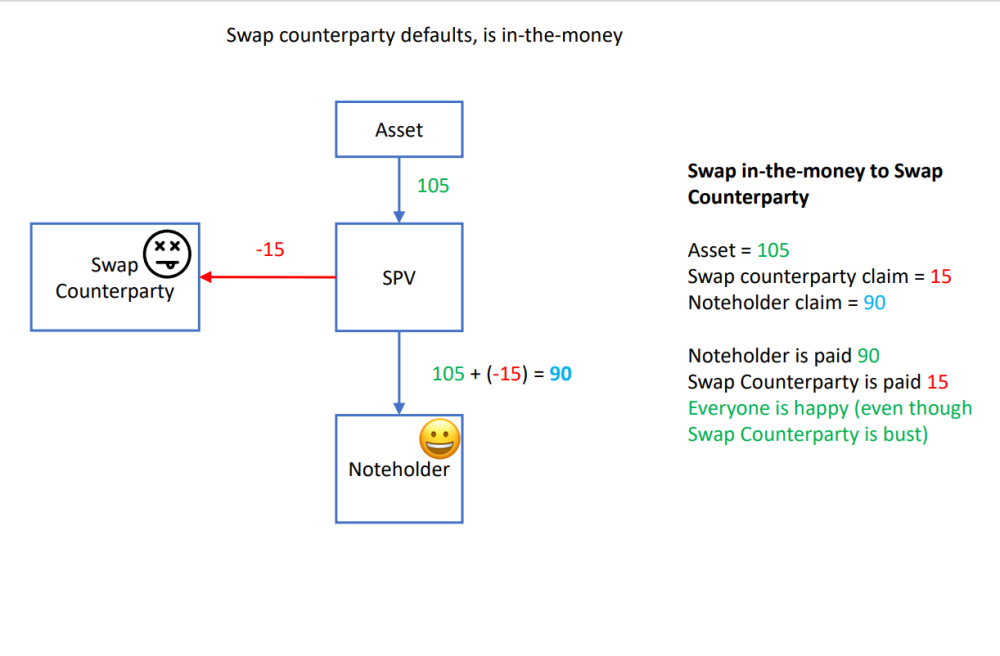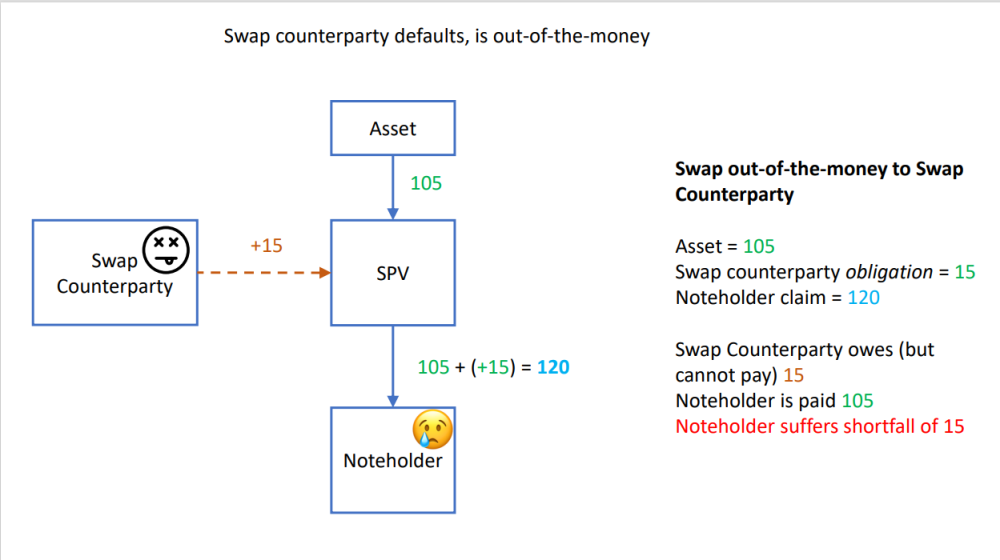|
The Jolly Contrarian holds forth™
|
A Counterparty “flipping” yesterday.
|
|
Swap counterparty performs, is in-the-money
|
|
Swap counterparty performs, is out-of-the-money
|
|
Swap counterparty defaults, is in-the-money
|
|
Swap counterparty defaults, is out-of-the-money
|
Resources and Navigation
Index: Click ᐅ to expand:
|
|
The priority of payments waterfall in a repackaging is an important, but fundamentally dull, piece of engineering, only made interesting, somewhat, when rating agencies intervene sometimes to make life harder for dealers. The idea is to sort out all the agents and their mandatory running costs first, then “senior” creditors — typically the broker as swap counterparty, though this is where rating agencies can intervene — then getting to the Noteholders and if anything is left after that, to the Issuing SPV.
Given the wide range of assets and structures that repackaging SPVs can engage in, the trick it to make it as general as possible. Legal eagles like to nest in the overhangs of a payments waterfall — they can make a frightful mess — so it pays to keep it as simple as possible.
The order of ceremonies tends to be as follows:
- Taxes: the SPV is set up to be tax neutral but given the wide range of instruments that can underly asset-backed notes, there could be some mandatory taxes: stamp duty, financial transaction taxes, VAT — that kind of thing. In any case the risk remains of changes in law and tax practice post issuance that would make unexpected taxes payable. If any are, they are paid first. Render unto The Man what is The Man’s, and all that.
- Trustee’s fees and expenses: The trustee tends to be “first among equals” of the programme counterparties. Like all the other agents, its ordinary fees for acting as trustee are paid upon issuance. This limb of the waterfall would only include extraordinary fees and expenses the trustee incurs when enforcing security or otherwise resolving the notes. Things like obtaining legal advice, making security registrations, filing discharges etc and taking action to defend any claims that might arise between creditors. These would be more significant were the security enforced – typically an early redemption is intended to happen without the need for that.
- Other programme agents: The remainder of the agents (other than Tramontana’s agency roles) are next. Again, unless there are extraordinary/unanticipated costs or additional work is required then there would be no further costs beyond those accounted for at issuance.
- Dealer/Swap Counterparty: if we take it as a given that the Note payoff is a par-asset swap of some kind (i.e., bond underlier ± swap mark-to-market) it makes sense that the swap should be closed out and its value settled before noteholders are paid.
- Redemption Amount/ Early Redemption Amount: this is the amount due to Noteholders under the Notes.
- Residual amounts: anything left — and for your common-or-garden repack there shouldn’t be anything left — goes to the issuer and is tossed into the pot and used for the Christmas party on Cayman Brac or something like that.
Premium content
Here the free bit runs out. Subscribers click 👉 here. New readers sign up 👉 here and, for ½ a weekly 🍺 go full ninja about all these juicy topics 👇 |
- Rating Agencies and the “flip clause”
- The Trustee Act and the Trustee’s primary responsibility
See also
References




